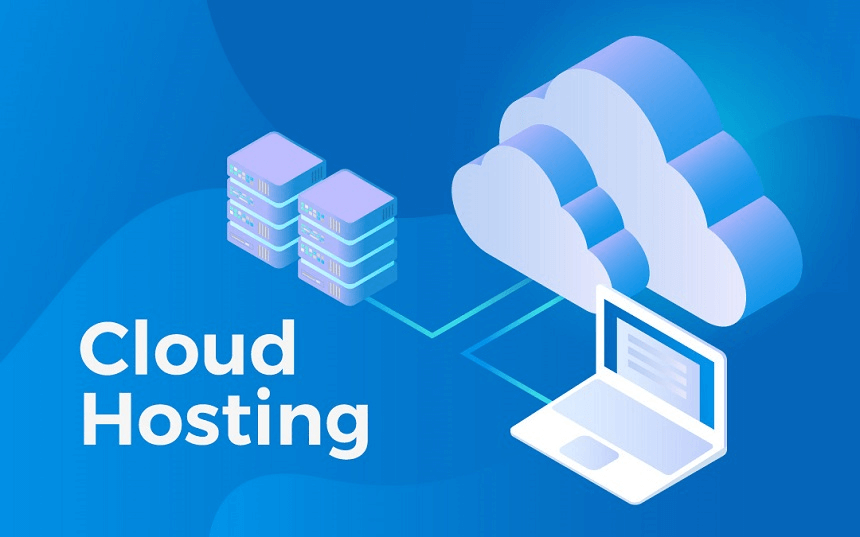Cloud Web Hosting Services Explained
Cloud web hosting services represent a significant advancement in website management, offering unparalleled scalability, flexibility, and cost-effectiveness compared to traditional hosting methods. This shift towards cloud-based solutions has revolutionized how businesses and individuals approach online presence, providing robust infrastructure and enhanced security measures. Understanding the nuances of cloud hosting, including its various models and deployment strategies, is crucial for making informed decisions about your online infrastructure.
This exploration delves into the core aspects of cloud web hosting, examining its benefits, selection criteria, security considerations, and future trends. We will analyze different cloud hosting models, discuss best practices for management and monitoring, and explore strategies for cost optimization and disaster recovery. The goal is to provide a comprehensive understanding of this dynamic landscape, empowering readers to make informed choices for their web hosting needs.
Benefits of Cloud Web Hosting Services

Cloud web hosting offers a compelling alternative to traditional hosting methods, providing numerous advantages for businesses of all sizes. The flexibility, scalability, and cost-effectiveness offered by cloud solutions are transforming the way websites are built and maintained. This section will explore these key benefits in detail.
Scalability and Flexibility, Cloud web hosting services
Cloud hosting’s inherent scalability allows websites to effortlessly adapt to fluctuating traffic demands. Unlike traditional hosting, where resources are fixed, cloud hosting dynamically allocates resources as needed. This means a website can handle sudden traffic spikes during promotional campaigns or seasonal peaks without performance degradation or crashes. Similarly, the flexibility allows for easy scaling down of resources during periods of low traffic, optimizing costs. Imagine a small e-commerce business experiencing a surge in sales during the holiday season; with cloud hosting, they can instantly increase their server capacity to handle the increased traffic without lengthy setup times or expensive hardware upgrades. Conversely, after the holiday rush, they can just as easily scale back down, paying only for the resources they actually use.
Cost-Effectiveness of Cloud Web Hosting
Cloud hosting often proves more cost-effective than traditional hosting, especially for businesses with unpredictable traffic patterns or fluctuating resource needs. The pay-as-you-go model eliminates the need for upfront investments in expensive hardware and software licenses. Businesses only pay for the computing resources they consume, resulting in significant cost savings compared to maintaining their own servers or paying for fixed resources they may not fully utilize. For example, a startup website might initially require minimal resources, gradually increasing its needs as it grows. Cloud hosting allows them to start small and scale up gradually, avoiding the financial burden of over-provisioning.
Improved Reliability and Uptime with Cloud Hosting
Cloud hosting significantly enhances website reliability and uptime. The distributed nature of cloud infrastructure means that if one server fails, others seamlessly take over, ensuring minimal disruption to website accessibility. Redundancy built into the system ensures continuous operation, reducing downtime and improving user experience. This contrasts sharply with traditional hosting, where a single server failure can lead to complete website outage. For instance, a major online retailer relying on cloud hosting can experience a server failure in one data center without impacting its customers, as traffic is automatically redirected to other data centers. This level of redundancy is difficult and expensive to achieve with traditional hosting.
Comparison of Cloud Hosting and Traditional Hosting
| Feature | Cloud Hosting | Traditional Hosting |
|---|---|---|
| Scalability | Highly scalable, easily adjust resources | Limited scalability, requires manual upgrades |
| Cost | Pay-as-you-go, cost-effective for variable usage | Fixed costs, potentially expensive underutilization |
| Reliability | High reliability due to redundancy and failover | Lower reliability, single point of failure risk |
| Flexibility | Highly flexible, easily deploy and manage applications | Less flexible, requires more manual configuration |
Security in Cloud Web Hosting

Cloud web hosting offers numerous advantages, but security remains a primary concern for businesses and individuals alike. Understanding the potential vulnerabilities and implementing robust security measures is crucial for protecting valuable data and maintaining operational continuity. This section will explore common security concerns, best practices, and the provider’s role in safeguarding your information.
Security concerns in cloud environments are multifaceted, differing somewhat from traditional on-premise hosting. The shared responsibility model, where both the provider and the user share security duties, necessitates a clear understanding of each party’s role. Failure to address these concerns can lead to data breaches, service disruptions, and significant financial losses.
Common Security Concerns
Data breaches, unauthorized access, and malware infections are among the most prevalent security risks. The distributed nature of cloud environments can complicate security management, especially when multiple users share resources. Additionally, misconfiguration of security settings, inadequate access controls, and vulnerabilities in applications running on the cloud infrastructure can expose sensitive data to attack. For example, a misconfigured firewall could allow unauthorized access to databases containing customer information. Similarly, weak passwords or a lack of multi-factor authentication can create entry points for malicious actors.
Best Practices for Securing Data in a Cloud Environment
Implementing strong security practices is essential to mitigate these risks. This includes regularly updating software and security patches to address known vulnerabilities. Employing robust access control measures, such as role-based access control (RBAC), restricts access to sensitive data based on user roles and responsibilities. Furthermore, encryption, both in transit and at rest, is crucial for protecting data from unauthorized access, even if a breach occurs. Using strong, unique passwords, coupled with multi-factor authentication (MFA), adds an extra layer of protection against unauthorized logins. Regular security audits and penetration testing can identify vulnerabilities before they can be exploited. Finally, implementing a comprehensive data loss prevention (DLP) strategy can help prevent sensitive data from leaving the cloud environment without authorization.
The Provider’s Role in Ensuring Data Security
Cloud providers play a significant role in maintaining the security of their infrastructure and services. This responsibility typically includes physical security of data centers, network security, and the provision of security tools and services. Providers often invest heavily in security technologies, such as intrusion detection and prevention systems (IDPS), firewalls, and data encryption. They also regularly audit their systems for vulnerabilities and implement security updates to protect against known threats. Transparency regarding security practices and compliance with relevant regulations (like GDPR or HIPAA) is crucial for building trust with clients. Choosing a reputable provider with a strong security track record and transparent security policies is paramount.
Managing and Monitoring Cloud Web Hosting: Cloud Web Hosting Services
Effective management and monitoring are crucial for ensuring the optimal performance and security of your cloud web hosting environment. This involves proactive measures to identify and resolve issues before they impact your website’s availability and user experience. Regular monitoring allows for the timely identification of potential problems, preventing significant downtime and maintaining a positive user experience.
Managing and monitoring a cloud hosting environment typically involves utilizing a combination of built-in tools provided by your cloud provider and third-party monitoring services. These tools provide real-time insights into various aspects of your server’s performance, security, and resource utilization, enabling you to make informed decisions and optimize your infrastructure. Understanding these tools and implementing best practices for troubleshooting will significantly improve the reliability and efficiency of your web hosting.
Cloud Provider Control Panels and Dashboards
Most cloud hosting providers offer comprehensive control panels and dashboards providing a centralized interface for managing your resources. These dashboards typically display key performance indicators (KPIs) such as CPU usage, memory consumption, disk I/O, and network traffic. For example, Amazon Web Services (AWS) provides the AWS Management Console, while Google Cloud Platform (GCP) offers the Google Cloud Console. These platforms allow you to monitor resource usage, scale your infrastructure up or down as needed, and manage security settings. Microsoft Azure’s Azure portal provides similar functionality, offering detailed metrics and visualizations for managing virtual machines, databases, and other cloud resources. Analyzing these dashboards helps in identifying potential bottlenecks or performance issues before they escalate. The ability to set alerts based on predefined thresholds is a key feature, allowing for proactive intervention.
Third-Party Monitoring Tools
While cloud provider dashboards are invaluable, third-party monitoring tools often offer more advanced features and broader integration capabilities. These tools can monitor various aspects of your website’s performance, including uptime, response time, and error rates. Popular examples include Datadog, New Relic, and Nagios. These tools typically provide comprehensive dashboards with customizable alerts, allowing you to track specific metrics relevant to your application and business needs. They can also integrate with other tools in your development and operations workflow, creating a more unified monitoring and alerting system. For instance, integrating a third-party monitoring tool with a chat application can allow for immediate notification of critical issues, enabling faster response times.
Troubleshooting Common Cloud Hosting Issues
Troubleshooting effectively involves a systematic approach. Start by identifying the symptoms, such as slow loading times, website errors, or complete downtime. Then, utilize the monitoring tools to pinpoint the root cause. Common issues include high CPU usage (potentially indicating a resource-intensive process or a security vulnerability), insufficient memory (requiring scaling up resources), network connectivity problems (often requiring investigation of network configurations and routing), and database performance bottlenecks (potentially requiring database optimization or scaling). A systematic approach involves checking server logs, network configurations, and application logs to gather relevant information. For instance, high CPU usage might be resolved by optimizing code, upgrading hardware, or identifying and addressing malicious activity. Slow database queries could be addressed through database tuning or indexing strategies. The specific approach depends on the nature of the problem, and careful analysis of the available data is key to successful troubleshooting.
In conclusion, the transition to cloud web hosting services presents numerous advantages, from enhanced scalability and reliability to improved cost-efficiency and robust security features. By carefully considering factors such as provider selection, security protocols, and resource management, businesses and individuals can leverage the power of the cloud to create a robust and efficient online presence. The ongoing evolution of cloud technology, driven by advancements in serverless computing and AI, promises even greater efficiency and innovation in the years to come, making cloud hosting a compelling choice for the modern digital landscape.
Cloud web hosting services offer scalability and flexibility for businesses of all sizes. This is particularly beneficial for companies utilizing robust software solutions, such as those offered by software ERP cloud systems, which often demand significant resources. Ultimately, choosing the right cloud hosting provider is crucial for optimizing the performance and reliability of your entire digital infrastructure, including your ERP system.
Cloud web hosting services offer scalability and flexibility for websites of all sizes. A key component of this is the robust and secure storage solutions they provide, often leveraging the benefits of cloud based data storage for efficient data management. This integration ensures reliable uptime and easy access to website content, ultimately enhancing the overall performance and user experience of your hosted website.
Ultimately, efficient data storage is crucial for optimal cloud web hosting.
Posting Komentar untuk "Cloud Web Hosting Services Explained"